Lyretail killifish - Aphyosemion australe
Scientific name: Aphyosemion australe
Common name: Lyretail killifish
Family: Nothobranchiidae
Usual size in fish tanks: 5 - 7 cm (1.97 - 2.76 inch)
014
Recommended pH range: 5.5 - 7
Recommended water hardness: 2 - 10°N (35.71 - 178.57ppm)
0°C 32°F30°C 86°F
Recommended temperature range: 24 - 27 °C (75.2 - 80.6°F)
The way how these fish reproduce: Spawning
Where the species comes from: Africa
Temperament to its own species: peaceful
Temperament toward other fish species: peaceful
Usual place in the tank: Middle levels
Origin
The Lyretail Killifish (Aphyosemion australe) originates from Western Africa, specifically found in the rainforests of Gabon. In their natural habitat, these fish inhabit small, slow-moving streams and densely vegetated ponds with soft, slightly acidic water. These areas are typically shaded by thick vegetation, which provides cover and creates an environment with subdued lighting. Replicating these conditions in the aquarium is crucial for their health and well-being.
Lifespan
For a killifish, the Aphyosemion australe species has a relatively long lifespan, living up to 3 years with proper care. Stable water conditions, a nutritious diet, and a well-maintained environment are key to maximizing their lifespan.
Short Description
Lyretail Killifish are known for their vibrant colors and elegant, lyre-shaped tails. Males display striking shades of brownish-yellow to orange with flowing fins, while females are more subdued in color, appearing in dull brown with red spots. Growing to an average size of 5-7 cm (1.97-2.76 inches), these peaceful fish are best kept in pairs or small groups. They are generally easy to care for, making them an excellent choice for both beginner and experienced aquarists. However, regular partial water changes are essential to keep them healthy. There are several color morphs available, including variants with a more pronounced yellow background.
General Care Tips
Lyretail Killifish thrive in a well-planted tank that mimics their natural habitat. Use soft, slightly acidic to neutral water with a pH range of 5.5-7 and a water hardness between 2-10°N (35.71-178.57 ppm). The water temperature should be maintained between 24-27°C (75.2-80.6°F). Since they inhabit the middle levels of the tank, adding floating plants can help diffuse light and create shaded areas. Driftwood and fine-leaved plants provide additional cover, helping these fish feel secure.
Perform regular water changes, ideally 20-30% weekly, to maintain high water quality. Adding salt to the tank water (4 teaspoons per 10 gallons) can help improve their overall health, but this should be done cautiously, especially if there are other species in the tank. A gentle water flow is preferred, as it replicates the slow-moving waters they inhabit in the wild. Ensure that the aquarium lid is secure, as Lyretail Killifish are known to be jumpers.
Food and Feeding
Lyretail Killifish are omnivores, and their diet should consist of a mix of live, frozen, and prepared foods to meet their nutritional needs. In the wild, they primarily consume small invertebrates and insect larvae. In the aquarium, they thrive on a diet of live foods such as brine shrimp, microworms, and insect larvae. Supplement their diet with high-quality flake or small pellet foods to ensure balanced nutrition. Providing a varied diet not only keeps them healthy but also helps to enhance their vibrant coloration. Feed them in small amounts 2-3 times a day, ensuring that they consume the food within a few minutes to avoid water quality issues.
Sexing
Sexing Lyretail Killifish is relatively easy. Males are more colorful, with a background of brownish-yellow to orange, adorned with longer, flowing fins that end in a distinctive lyre shape. Females, in contrast, have a duller brown color with red spots and shorter fins. During breeding periods, males may become even more vibrant, displaying their colors to attract the females.
Breeding
Lyretail Killifish are among the easier killifish to breed, making them a popular choice for aquarists interested in breeding fish. To condition them for spawning, provide a diet rich in live, protein-based foods such as bloodworms, brine shrimp, and insect larvae. Set up a separate breeding tank with plenty of spawning mops or fine-leaved plants, as the fish prefer to lay their eggs on these surfaces.
The breeding process occurs over 10-12 days, during which the female will lay small batches of eggs, typically 10-20 at a time. It is important to either remove the parents from the breeding tank after spawning or transfer the eggs to a different tank before they hatch to prevent the adults from eating the eggs. The eggs will incubate for about 10-14 days before hatching. Once the fry are free-swimming, feed them with newly hatched brine shrimp or commercially available fry food until they grow large enough to accept larger foods.
Conclusion
Lyretail Killifish are a stunning and relatively easy-to-care-for species that can thrive in a well-planted aquarium. By providing a stable environment, maintaining water quality, and offering a varied diet, these fish will display their vibrant colors and natural behaviors. Their peaceful nature and striking appearance make them an excellent addition to a freshwater aquarium, whether for beginners or seasoned aquarists. With the right conditions, even breeding these captivating fish can be a rewarding experience.
Pictures
Bought by aqua-fish.net from jjphoto.dk.
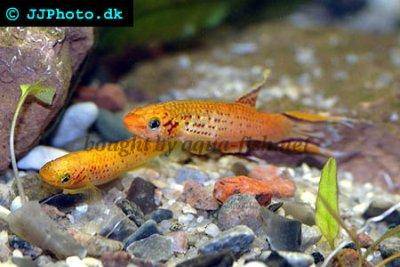








 Splendid
Splendid 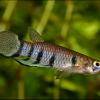 Redchin
Redchin  Panchax
Panchax 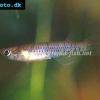 Sixbar
Sixbar  Amiets
Amiets  Blue
Blue 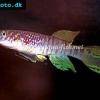 Blue
Blue 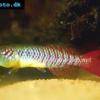 Guenthers
Guenthers 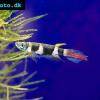 Banded
Banded